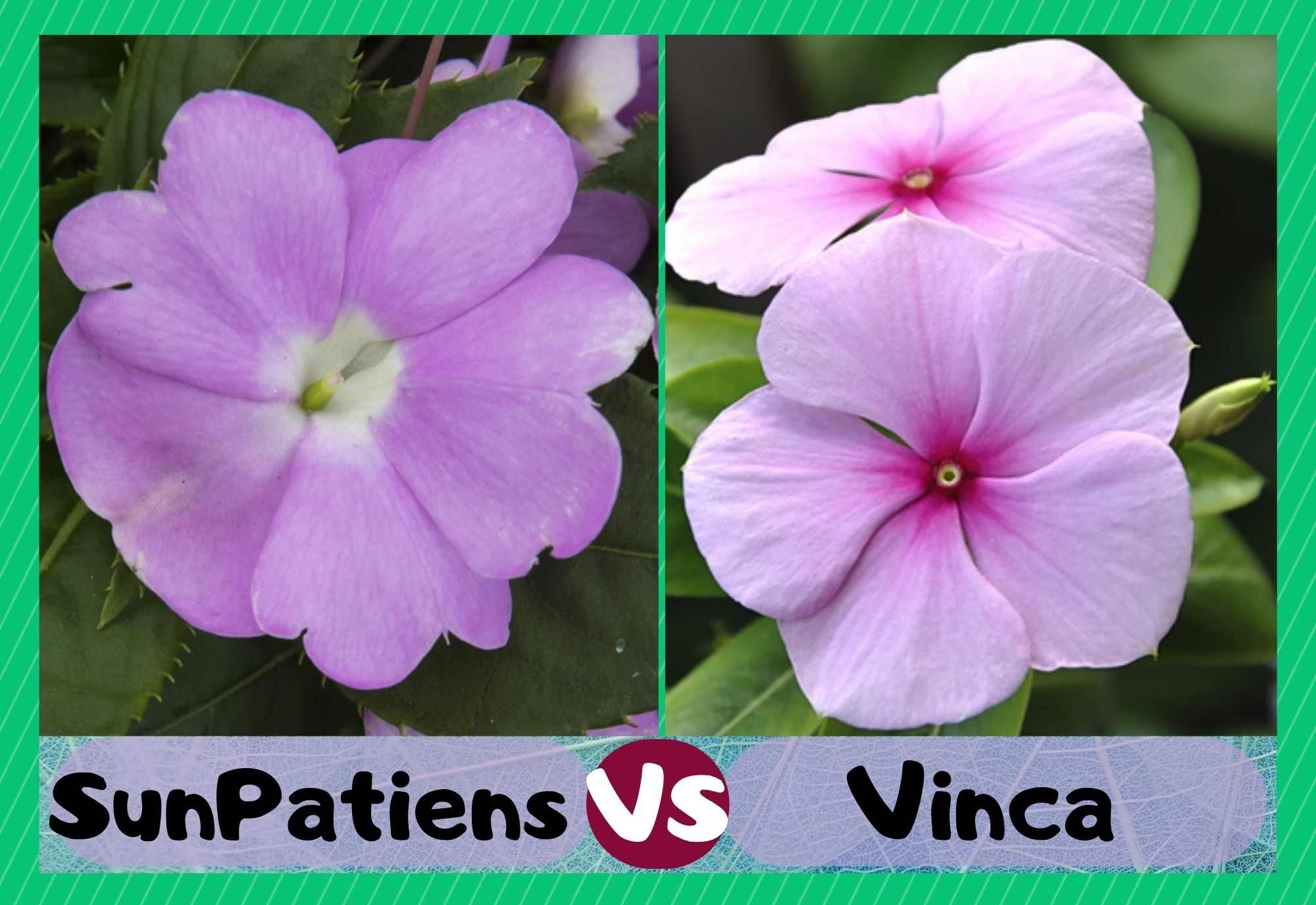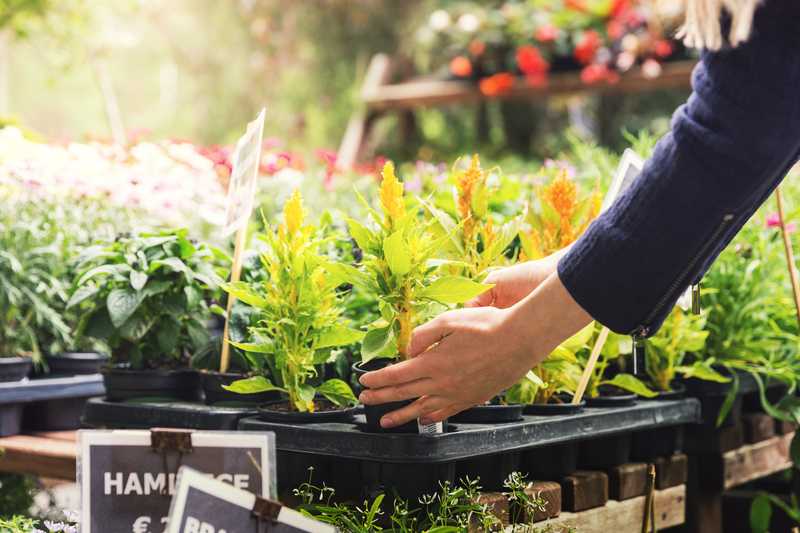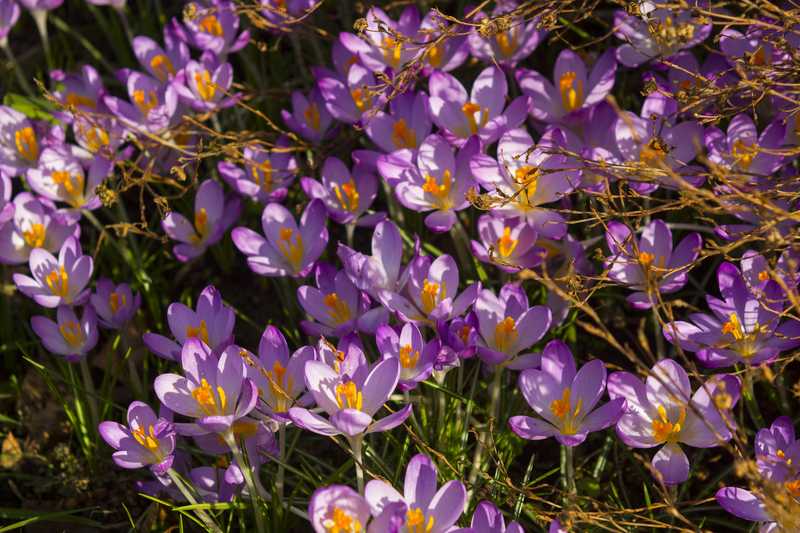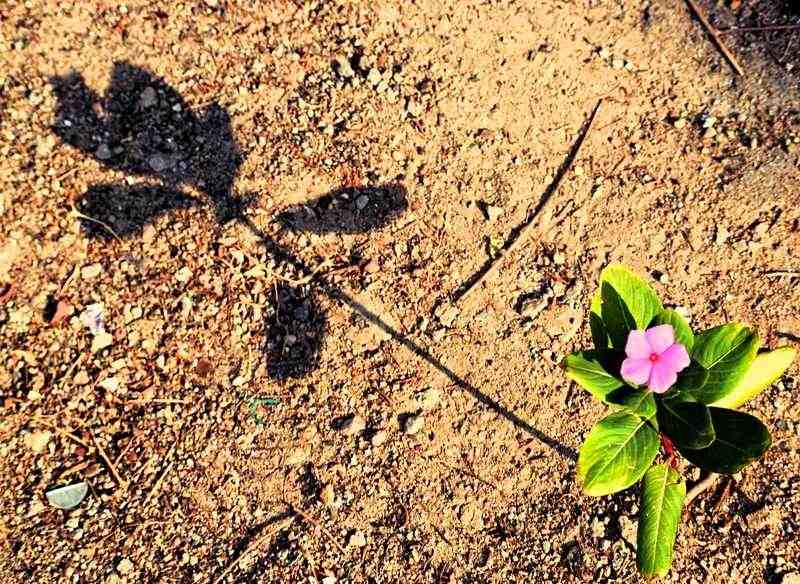
The summer season comes with the most beautiful blooms because the heat and humidity of the summer months accelerate plant growth. SunPatiens and Vinca are two such plants that thrive in the summer season, but there is a lot of confusion.
This is because these plants are quite similar in appearance, but there are some unique characteristics.
SunPatiens vs. Vinca
| Features | SunPatiens | Vinca |
| Family | Balsaminaceae | Apocynaceae |
| pH Level | 5.8 to 6.2 | 5.5 or 6 |
| Soil Temperature | 55-degrees Fahrenheit | 60-degrees Fahrenheit |
| Sunlight | Four hours | More than eight hours |
| Colors | White, red, orange, pink, or purple | Shades of pink, white, and mauve |
SunPatiens
SunPatiens are perfect for people who want to plant New Guinea impatiens, but the hot weather does not allow the planting. This is because SunPatiens boast a classic appearance like New Guinea but have thick bloom petals and sturdy foliage, making them suitable to tolerate infections, sun, and heat.
For this reason, they make a great addition to the summer flower beds. However, maintaining these flowers can be challenging as they need special soil and sufficient water flow to grow.
SunPatiens is also known as a touch-me-not plant suited to growing garden beds. These are new impatiens hybrids that can thrive under full shade and humid weather.
These flowers are native to the forest floors, but if you want to grow them in your garden, plant them in the partial shade or under the sun because they need at least four hours of direct sun exposure to ensure sufficient flower production.
- Anatomy
The size of the plants depends on the species and ranges from 5cm to 2.5m. The stems tend to root when they come in contact with the soil and the leaves become full.
In some cases, the leaves can sinuate and dent if there are more floral nectars. In addition, the leaves can be succulent or thin. The upper part of the leaves has small air bubbles, which leads to a silver shine (the shine becomes more evident when you hold the leaves underwater).
These belong to the Balsaminaceae family and produce flowers on an annual basis. When mature, the plant will be around 34-inch tall and 21-inch wide.
The petals are quite thick, which prevents the chances of catching infections and diseases, but you need to be careful about the soil to make sure the roots are not attacked.
- Growth & Use
SunPatiens is a hybrid bred made by a combination of traditional impatiens with heat-loving and large impatiens native to New Guinea. For this reason, they can thrive in humid and hot weather conditions.
The flower growth starts from summer and spring and goes up to autumn. In addition, the bedding flowers have a long-lasting color. Usually, the flowers are white, red, orange, pink, or purple.
SunPatiens need slow-release fertilizer to optimize their growth but add it to the top-most layer because fertilizer can damage the root system. Lastly, the soil temperature should be 55-degrees Fahrenheit.
- Growing Conditions
Growing SunPatiens is pretty easy, but the maintenance will be challenging. For instance, the soil should have proper draining, and it must be mixed with the organic materials.
When first planted, they should be watered daily for one to two weeks to make sure they are established, and after that, you can opt for moderate or alternate-day watering. These plants are available in three sizes: vigorous, spreading, and compact, so you need to be careful about spacing.
The compact and spreading varieties can be planted in the containers, while vigorous variety is suitable for garden beds because they spread pretty quickly. As far as the soil pH is concerned, the pH level of 5.8 to 6.2 is optimal (it cannot tolerate pH any higher than this).
Also, the soil must be well-drained, sandy, and loamy. The best thing about these plants is that they don’t need deadheading and pruning and annual flower production eliminates the need for replanting.
Vinca
Vinca is one of the most premium flower bedding plants and is perfect for hot and sunny areas. These are drought-tolerant plants, which means they can suffice the scarce water conditions. In addition, the flowers can thrive in any soil as long as it’s well-drained.
It is a low-maintenance option, suitable for gardeners who don’t like spending hours in the garden. It is available in a variety of colors, including shades of pink, white, and mauve.
They are also known as periwinkles and have large and sharp-colored flowers. The foliage is extremely attractive and looks impressive even when the flowers are not blooming.
In most cases, the cultivars grow in the upright form, but some of them have the trailing habit – the latter varieties are suitable for hanging baskets in the gardens. As seedlings, they can be sensitive, but once they capture the soil with their roots, they will be able to tolerate the difficult conditions.
- Anatomy
These flowers are native to southwest Asia, northwest Africa, and Europe and belong to the Apocynaceae flower family. The flowers are herbaceous or subshrubs with slender trailing stems. The stems tend to be 3.3ft to 6.6ft in height but cannot grow more than 27.50-inches above the ground.
The stems take the root where the stems touch the ground, resulting in wider spreading of the plant. The leaves tend to be over 2.36-inch wide and 3.5-inch long.
These are usually considered the ever-green plants, but the root system is prone to growth issues during the winter season.
The flowers are produced during the summer season as it’s the growth season, and the flowers tend to be around 2.76-inch in width and have around five violet or white petals adjoined together on the base for forming the tube. In addition, the fruit has a pair of follicles (these follicles are diverged).
- Growth & Use
Vinca is grown as ornamental plants because they grow lower on the ground and spread pretty quickly. For this reason, they are used for covering the ground in container gardens and garden landscapes. In addition, they are used in the old cemeteries as the maintenance-free and every-green ground covering.
This flower has around 86 alkaloids, and some of them are extracted to treat childhood cancers, leukemia, and lymphomas. Overall, different cultivars are available with different sizes, petal colors, and leaves.
- Growing Conditions
These are extremely versatile and grow pretty well in hanging baskets, containers, and garden beds. The seedlings can be planted in outdoor locations when the soil temperature is around 60-degrees Fahrenheit. As far as the spacing is concerned, the seedlings should be planted at a distance of 12 inches.
Make sure that the area gets more than eight hours of sunlight. In addition, the potting mix or soil should be drained well, and you can add sand or compost to the heavy soils to improve the drainage.
Ideally, the soil should have a pH of 5.5 or 6, but it can tolerate higher pH levels as well. The growth can be enhanced by using general fertilizers with equal amounts of potassium, nitrogen, and phosphorus. Since Vinca is a light feeder, it won’t need fertilizing throughout the summer season.
Still, if you want to use the fertilizer, use it 50% less than recommended because too much fertilizer can reduce the number of flowers. Also, they don’t catch diseases, so you don’t need to be worried about maintenance.
Which One Should You Grow?
Both these plants have their fair share of pros and cons. The SunPatiens are resistant to Phytophthora and are more expensive as compared to Vinca. In addition, SunPatiens are heat-resistant but need sufficient water.
On the other hand, Vinca is low-maintenance compared to SunPatiens, which need extensive maintenance.
The Bottom Line
Both SunPatiens and Vinca are beautiful plants, but it depends on personal preferences. Vinca is suitable for people who want affordable and low-maintenance plants, while SunPatiens need more care and can be expensive. So, it depends on your personal preferences and of course, your budget.



